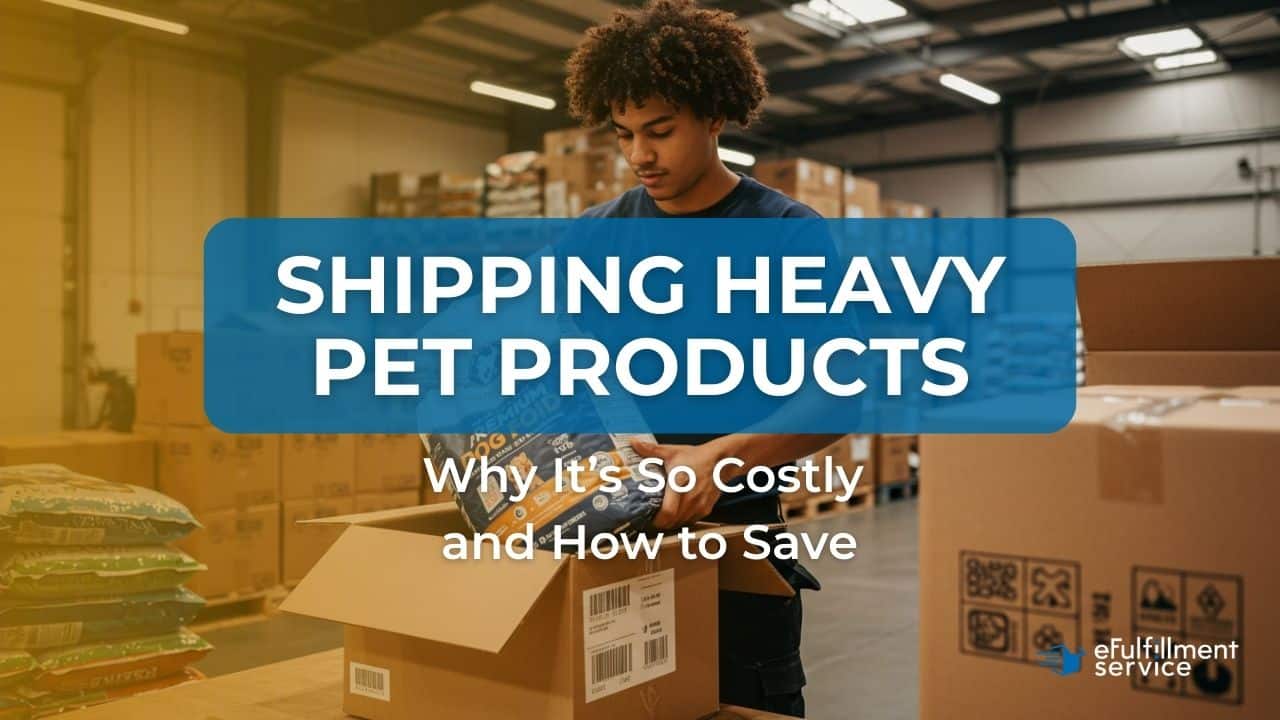
Jump right in: Shipping Heavy Pet Products: Costs & How to Save
Shipping heavy pet products like a 30-lb dog food bag or bulky cat litter gets expensive fast because carriers price by weight, distance, and dimensional (DIM) size, then layer on handling and residential fees.
If you run a pet brand, independent store, or a DTC shop, you’ve likely felt the sting of shipping heavy pet products. Many sellers explore full-service pet fulfillment services to streamline storage, packing, and carrier selection.
This guide breaks down the cost drivers, compares USPS vs. UPS vs. FedEx for heavy parcels, lists packaging tactics to lower DIM weight, and shows how SaverShip by eFulfillment Service can slash rates for 5–75 lb shipments.
Why Shipping Heavy Pet Products Is So Expensive
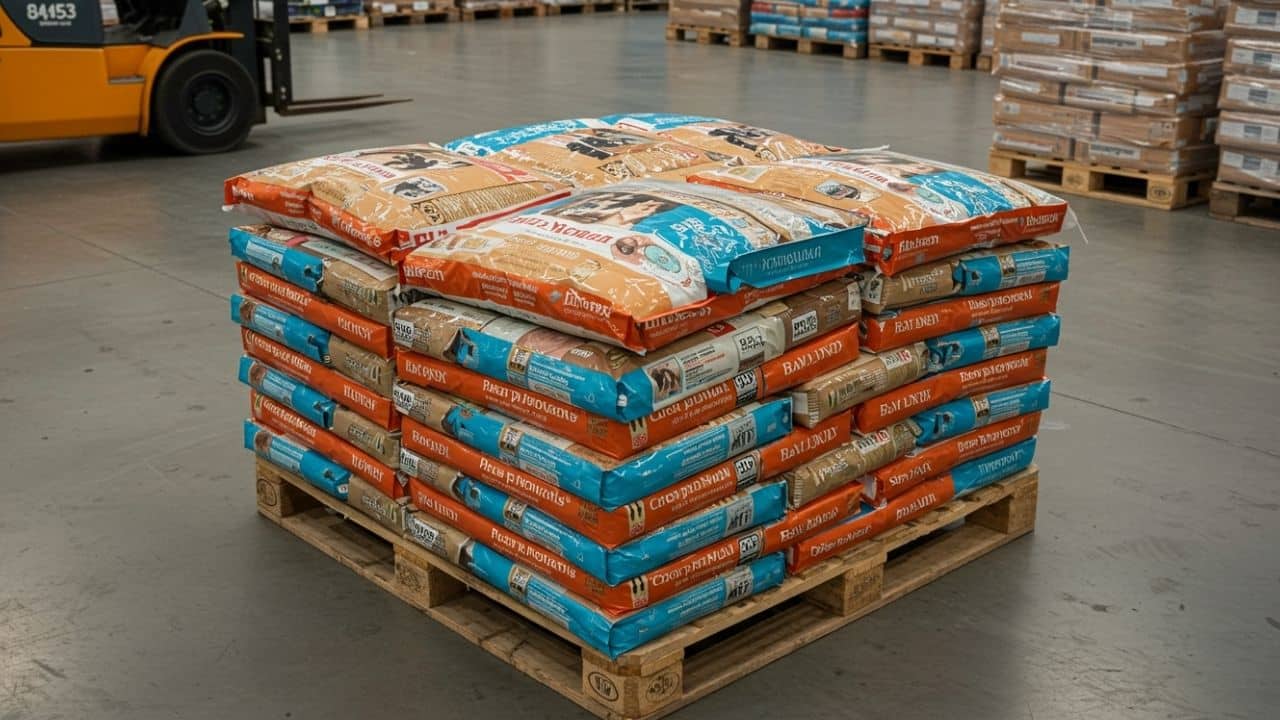
1) Weight multiplies cost
Carriers rate by weight. A 40 lb carton costs far more than a 4 lb one, and the difference grows with distance.
2) Distance (zones) magnifies weight
Zone pricing means a New York → California shipment can cost 3–4× more than a nearby state.
3) Additional handling and residential surcharges
UPS and FedEx add Additional Handling once a box exceeds 50 lb. Residential and fuel fees stack on top.
4) DIM weight on bulky items
If L × W × H ÷ divisor is higher than the actual weight, you pay the DIM rate. Cat trees, beds, and crates often trigger DIM. USPS also applies Nonstandard Fees to very large boxes.
5) Packaging and damage risk
Heavier contents need stronger cartons and better dunnage, which add weight, cost, and handling time.
Bottom line: heavy = weight + space + handling + distance. That’s how a $30 bag of food can end up with $50+ postage.
Carrier Comparison for Shipping Heavy Pet Products (U.S. Domestic)
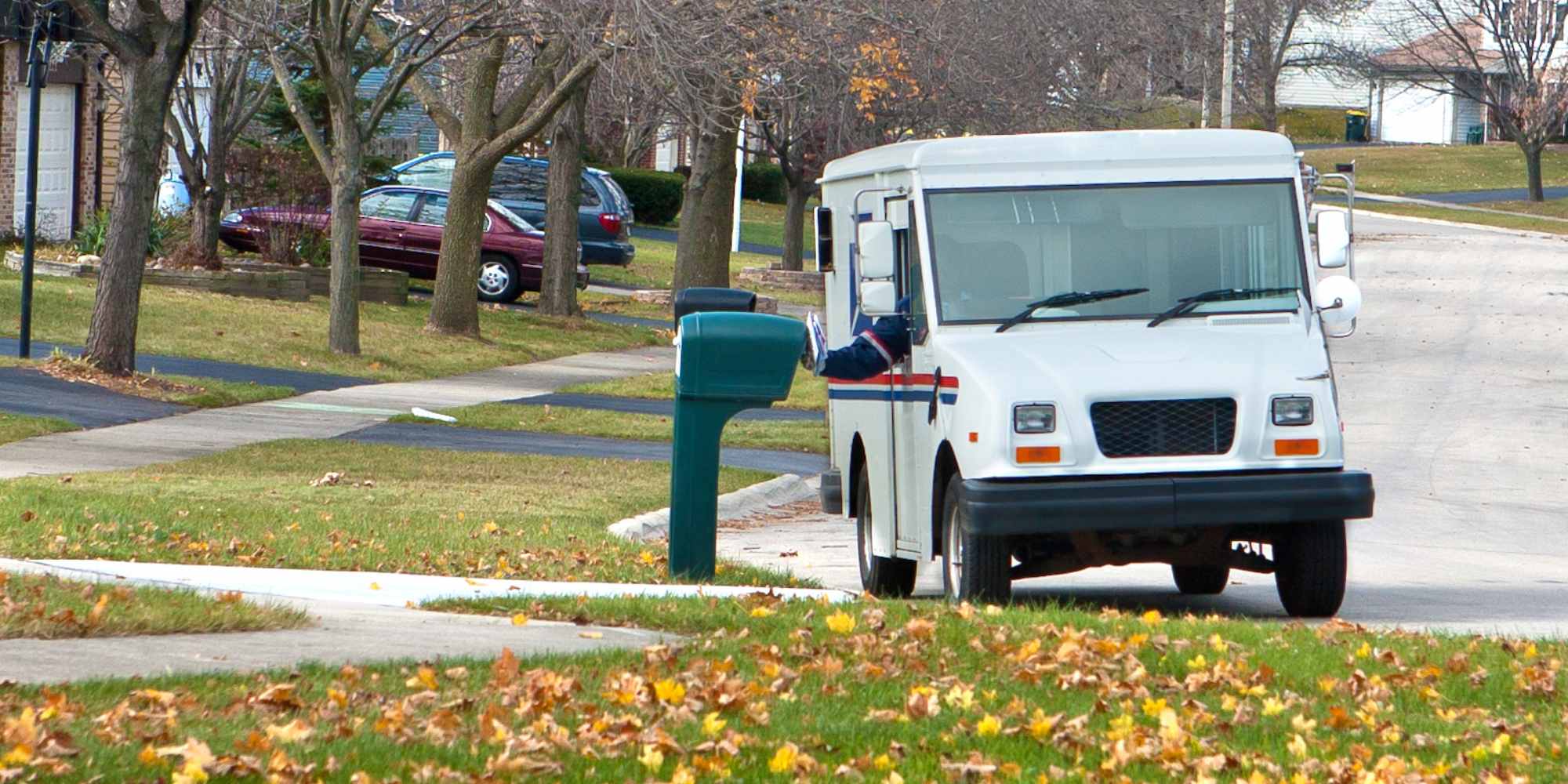
USPS Ground Advantage (≤70 lb)
-
Pros: No “heavy” surcharge under 70 lb; delivers to PO boxes/APO/FPO/rural; tracking + $100 insurance.
-
Cons: Costs spike at higher weights/long distances; strict 70 lb limit; DIM and nonstandard size fees can apply.
-
Best for: Sub-20 lb heavy-ish orders, compact dense items, PO boxes and remote addresses.
UPS Ground (≤150 lb)
-
Pros: Fast, reliable ground; detailed tracking; can beat USPS for heavier weights with negotiated discounts.
-
Cons: Additional Handling over 50 lb, plus residential, fuel, and oversize fees; no PO boxes.
-
Best for: 20–70 lb with discounts; required above 70 lb.
FedEx Ground / Home Delivery (≤150 lb)
-
Pros: Strong long-haul speed; robust tracking; frequent 7-day residential delivery.
-
Cons: Similar surcharge stack to UPS; no PO boxes without hybrid services.
-
Best for: 20–70 lb with discounts; essential above 70 lbs
Snapshot
-
Weight limits: USPS ≤70 lb; UPS/FedEx ≤150 lb.
-
Heavy surcharges: USPS none under 70 lb; UPS/FedEx add Handling once >50 lb, plus residential/fuel/oversize.
-
Reach: USPS covers PO boxes/APO/FPO; UPS/FedEx don’t.
-
Speed: All are ground; UPS/FedEx often faster long-distance.
Shipping Heavy Pet Products Shouldn't Eat Up Your Margins.
If fulfillment costs are starting to take over, we should talk.
Request a free quote from eFulfillment Service.
Illustrative Cost Scenarios
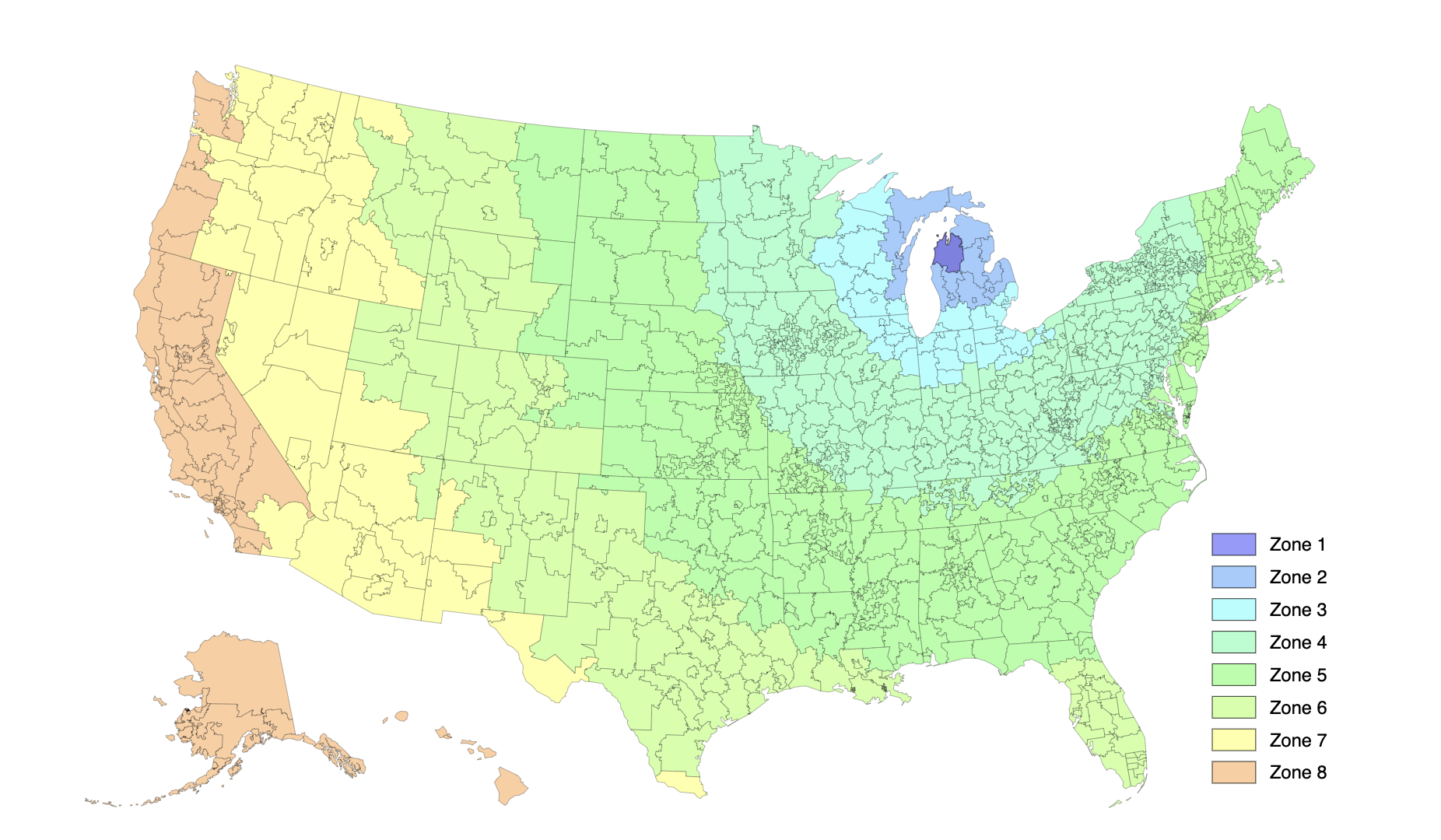
20 lb, Zone 4 (~1,000 miles)
-
USPS: often ~$25–$30
-
UPS/FedEx: ~$25–$30 after residential
-
SaverShip: commonly in the ~$8–$10 range for this weight class
50 lb, Zone 8 (coast-to-coast)
-
USPS: can approach or exceed ~$100 at retail
-
UPS/FedEx: often ~$95–$105 after heavy + residential + fuel
-
SaverShip: frequently ~one-fifth of USPS/FedEx, roughly ~$20–$25
Rates vary by route, shipping zones, and discounts; use your specific lanes for exact quotes.
Shipping doesn’t have to be a hassle.
Partnering with a 3PL like eFulfillment Service means you can focus on growing your business while we handle the details. Request a Free Quote Today!
Tactics to Lower DIM Weight and Total Cost
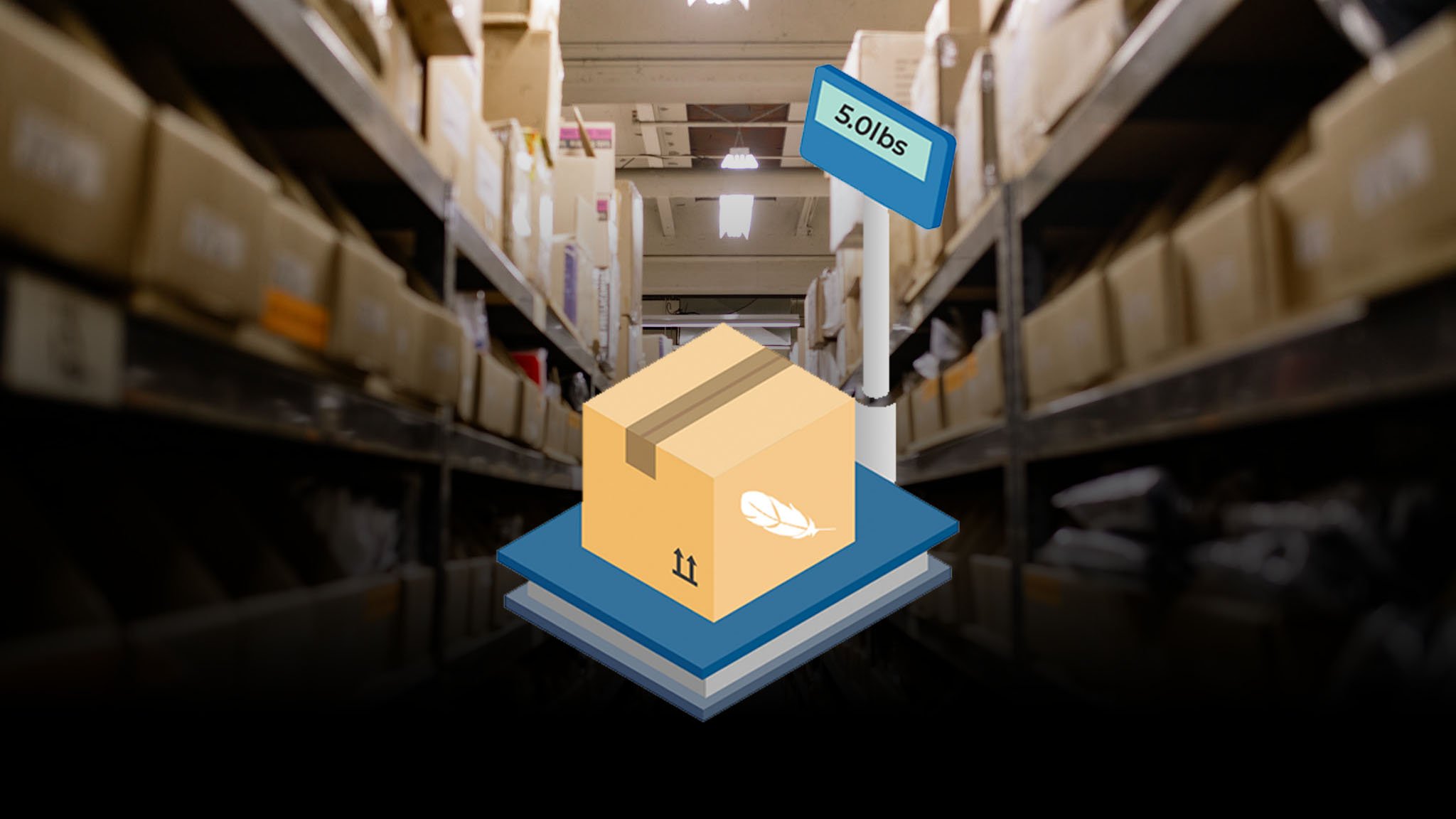
1) Right-size every carton
Use the smallest safe box. Avoid shipping air. If retail packaging is rugged (sealed kibble bag, rigid pail), label it and add minimal wrap.
2) Pack efficiently
Use only the dunnage you need. Nest smaller SKUs around larger ones. Ship bulky gear flat-packed and unassembled.
3) Choose strong, light materials
Quality corrugate, air pillows or kraft paper over dense fillers. Avoid double-boxing unless necessary.
4) Use flat-rate or regional options
USPS Priority Mail Flat Rate (≤70 lb) can win for compact, dense items. Check UPS Simple Rate and FedEx One Rate (≤50 lb) when SKUs fit.
5) Split when it saves
Two 40 lb cartons can be cheaper than one 80 lb box by avoiding >50 lb handling fees and oversize penalties. Do the math before committing.
6) Shorten distance
Distribute inventory or use a centrally located 3PL to reduce average zones and transit variability.
7) Leverage scale
Negotiate if you have volume. If not, use a 3PL’s aggregated buying power to access lower base rates and fewer add-ons.
SaverShip by eFulfillment Service (EFS): Heavy-Parcel Savings for 5–75 lb
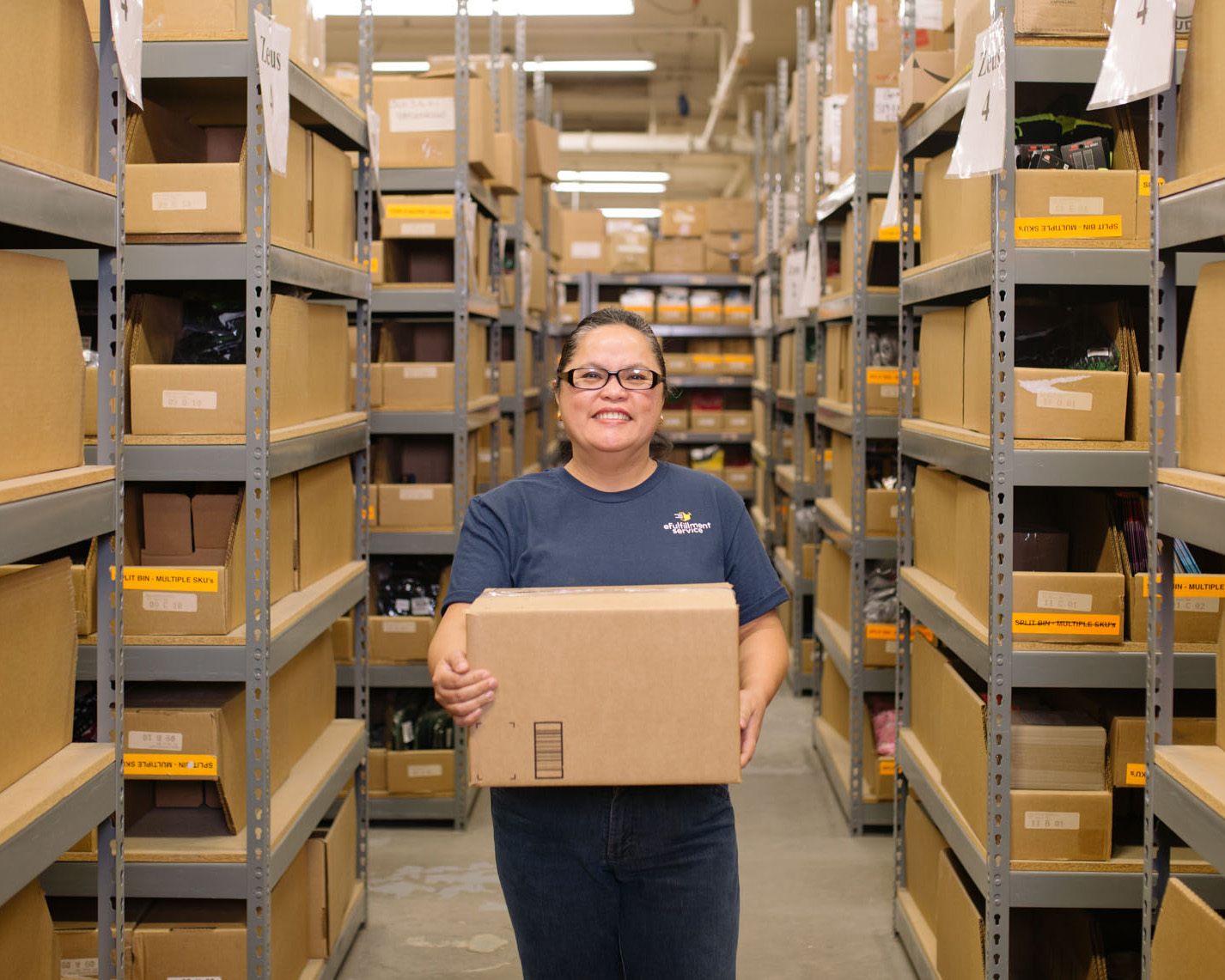
What it is: A consolidated heavy-parcel program available to EFS clients. EFS aggregates high-weight orders, zone-skips long distances, and injects parcels into optimal final-mile networks.
Why it’s cheaper:
-
Pricing leans toward actual weight, not zones.
-
No per-package heavy or residential surcharges.
-
DIM impact is greatly reduced.
-
Predictable, often 50–80% lower vs. standard carrier pricing for shipping heavy pet products.
Service experience:
-
Typical U.S. transit: 2–5 days from EFS’s central Michigan facility.
-
Normal tracking numbers and customer-friendly visibility.
-
No setup fees, long-term contracts, or order minimums.
-
EFS handles storage, pick/pack, packaging optimization, and claims support.
FAQs on Shipping Heavy Pet Products
What makes shipping heavy pet products so expensive?
Weight, zone distance, DIM sizing, and handling/residential surcharges drive most costs.
Is USPS cheaper than UPS or FedEx for heavy items?
Often for compact items and shorter zones under 70 lb. Above 70 lb, USPS is out.
How do I reduce DIM charges on bulky pet items?
Right-size cartons, pack efficiently, ship flat-packed when possible, and avoid empty space.
When should I split a heavy order into two boxes?
When two lighter cartons avoid >50 lb handling fees or oversize penalties, run both quotes.
How does SaverShip lower costs for heavy pet products?
Consolidation and zone-skipping reduce distance and surcharges; pricing skews toward actual weight.
Summary & Key Takeaways:
You can’t make a 50 lb box cost like a 5 oz chew toy, but you can stop overpaying. Understand the drivers behind shipping heavy pet products, right-size packaging, exploit flat-rate options, split when it actually saves, and reduce zones. Most importantly, leverage scale through negotiation or a 3PL. For many pet brands, SaverShip is the fastest path to sustainable heavy-parcel economics.
👉 If you’re ready to grow your Pet brand without the stress of logistics, Get a Free Quote from eFulfillment Service.
Ready to talk pet fulfillment solutions? The team at eFulfillment Service is happy to help answer questions and set you up for fulfillment success. Here’s to fewer headaches and more growth ahead!


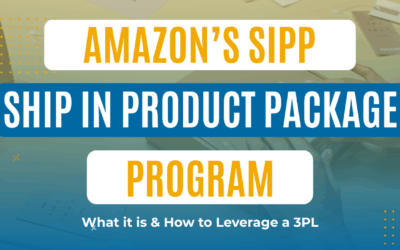
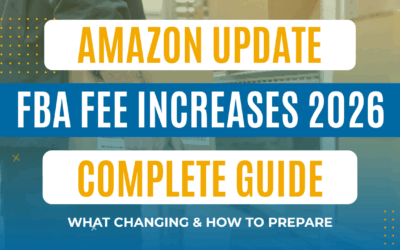
0 Comments